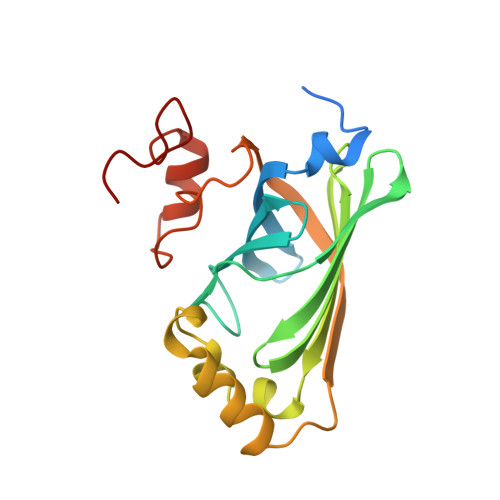P-Coumaric Acid Decarboxylase from Lactobacillus Plantarum: Structural Insights Into the Active Site and Decarboxylation Catalytic Mechanism.
Rodriguez, H., Angulo, I., D Elas Rivas, B., Campillo, N., Paez, J.A., Munoz, R., Mancheno, J.M.(2010) Proteins 78: 1662
- PubMed: 20112419
- DOI: https://doi.org/10.1002/prot.22684
- Primary Citation of Related Structures:
2W2A, 2W2B, 2W2F, 2WSJ - PubMed Abstract:
p-Coumaric acid decarboxylases (PDCs) catalyze the nonoxidative decarboxylation of hydroxycinnamic acids to generate the corresponding vinyl derivatives. Despite the biotechnological relevance of PDCs in food industry, their catalytic mechanism remains largely unknown. Here, we report insights into the structural basis of catalysis for the homodimeric PDC from Lactobacillus plantarum (LpPDC). The global fold of LpPDC is based on a flattened beta-barrel surrounding an internal cavity. Crystallographic and functional analyses of single-point mutants of residues located within this cavity have permitted identifying a potential substrate-binding pocket and also to provide structural evidences for rearrangements of surface loops so that they can modulate the accessibility to the active site. Finally, combination of the structural and functional data with in silico results enables us to propose a two-step catalytic mechanism for decarboxylation of p-coumaric acid by PDCs where Glu71 is involved in proton transfer, and Tyr18 and Tyr20 are involved in the proper substrate orientation and in the release of the CO(2) product.
Organizational Affiliation:
Departamento de Microbiología, Instituto de Fermentaciones Industriales, CSIC, Juan de la Cierva 3, E-28006 Madrid, Spain.
















